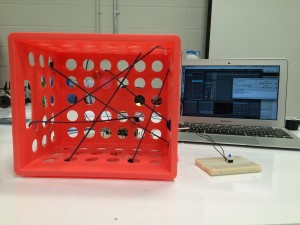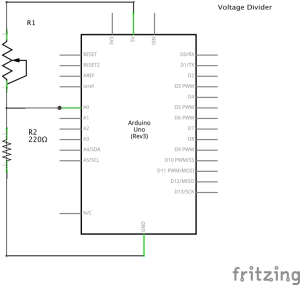One-in-one-out: Noise Box
|
Group Members: Jaime Chu, Craig Morey This is an update from our previous post: One-in-one-out: Conductive Acoustic From our initial experimentation with the conductive rubber we had a couple of findings.
Craig and I ultimately took our learnings from our last experimentation and used it to our advantage in creating this project. With this new knowledge we set out to put our musical instrument idea aside and come up with an installation piece. We still wanted to keep our conductive rubber inspiration, but this time contain it in a box. This time we used Midi (Musical Instrument Digital Interface) connected serially through our laptop and Arduino to be our speakers and laid out our rubber pieces all over the box in order to symbolize noise. With the help of Hairless Midi and Ableton Live, we were able to create the perfect sound for our project. Coming from an electrical engineering background, I thought of the idea of how signal travels through wires and how easily noise can disrupt it when we came up with the concept of a noise box. We wanted the disturbance of the strings to showcase propagating “noise” through the sounds.
We used 6 strings total as part of our implementation because of the 6 total analog inputs in Arduino’s limited capabilities. To the right is a schematic of how each conductive rubber was put together. The second resistor used as the voltage divider will vary depending on the length of the conductive rubber.
MIDI signals are sent from the Arduino over USB as serial messages. The serial messages are converted into MIDI commands on the computer using a tool called “Hairless MIDI<->Serial Bridge” which can be found at http://projectgus.github.io/hairless-midiserial/. The MIDI input is then used to produce our output sound in Ableton Live. Ableton Live is a digital audio workspace, where the user and combine different sounds to produce different audios. For our specific project, we used the Sine Wave in order to continually produce sound from our box. See source code: https://github.com/T0B0R/noise-box/blame/master/midi_control.md YouTube / Jaime Chu – via Iframely
|
One Comment
Leave a Reply
You must be logged in to post a comment.


 Implementation:
Implementation:
Pingback: One-in-one-out: Conductive Acoustic | F15 60-223: Intro to Physical Computing